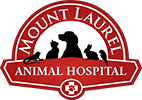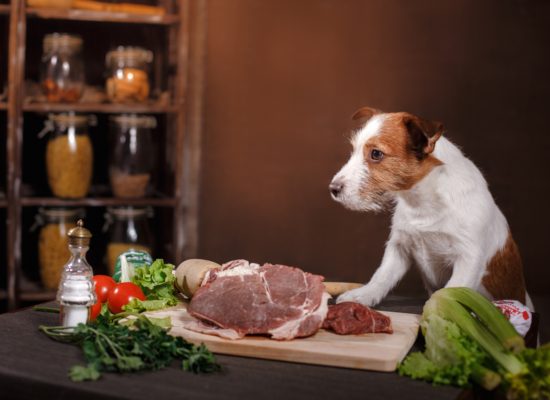Today’s technology has made most of our lives significantly easier by facilitating the mass sharing of information. While this extensive network has many beneficial attributes, unfortunately it also allows for the dispersal of falsehoods. One such example concerns the pet food industry. Being a pet parent in general can be stressful as it is full of uncertainty but adding the complexity of choosing a diet out of thousands can cause said stress to reach/ breach a pet parent’s anxiety threshold. It may seem obvious that a veterinarian and/or veterinary team should be the primary source for a pet’s nutritional recommendations; however the majority of pet parents turn to the internet. While accurate, factual information can be found on the internet, the majority of pet nutritional information available to consumers consists of self-proclaimed expert’s opinions. These opinions often conflict with the truth making it challenging for the pet parent and the veterinarian to partner for the medical benefit of the pet. The information below covers several common topics of which myths have been generated.
Grains
“Grain” is a general term used when referring to cereal grains, which are edible seeds of certain grasses. This can include, but is not limited to: wheat, rice, oats, corn, sorghum, and barley. While an individual may include amaranth, buckwheat, and quinoa into their personal definition
of a grain, those are in fact pseudograins. Pseudograins have a similar nutrient profile when compared to true grains, yet are not a member of the Poaceae/ Gramineae family.
Grains are often thought of as “fillers”, which instills the belief that the ingredient is a) lacking in nutritive quality and b) reduces the nutritive quality of the diet overall. Pet food is expensive to produce, and every ingredient has a cost associated; it would be poor business practice to include ingredients in the diet that had no function. While every grain has a unique nutrient profile, they are all a source of 1) essential fatty acids which benefits skin and fur coat, 2) essential amino acids, 3) fiber which promotes gastrointestinal health, and 4) vitamins and minerals which
support all metabolic functions; the addition of a grain into a diet complements the nutrients provided by the other ingredients, leading to a complete and balanced recipe.
The grain-free fad most likely originated by anthropomorphizing human coeliac disease. Certain grains contain gluten (wheat, barley, rye, triticale, semolina, durum, spelt, etc.) which can cause a severe, adverse autoimmune reaction in coeliac patients. It is important to note that corn gluten is NOT the same thing as gluten, thus it will not produce the same reaction in a patient with a gluten allergy. While it is true that some pets may have a true grain allergy, this is incredibly rare.
Furthermore (excluding a true allergy) there is no scientific evidence to support the claim that grains lead to health problems.
It is important to keep in mind that grain free is not the same as carbohydrate free. Carbohydrates/ starch is essential for helping the kibble keep its shape, thus if grains are not used, expensive substitutes (tapioca, cassava, potato starch) will be used in their place. Ultimately, these starchy carbohydrates contribute fewer nutrients to the diet, leading to more
additives to meet required vitamin and mineral levels.
By-Products
The definition of a by-product is “a secondary product produced in addition to the principal product”. For example, “meat” is the clean, fresh striated muscle from a mammal, and a “meat by-product” is the non-rendered, clean parts other than meat. It is important to note that byproducts
do NOT include hair, horns, hooves, teeth, or feces.
By-products are a source of essential nutrients for our pets and patients. The nutrient composition of the by-product is going to be dependent on what type of organ it is. For example, many microminerals are stored in the liver naturally, thus, mammal liver is an excellent source of microminerals such as copper, manganese, zinc, etc. Interestingly, many clients will avoid the word “by-products” on pet food labels, but still feed things like pig ears, tracheas, pizzles, etc. (all of which are considered by-products).
While by-products may not be appealing to most of the Western civilization, some are considered a delicacy by many people throughout the world, across many cultures and geographic locations. Additionally, dogs and wild canids will eat the by-products first! In general, it is not the individual ingredient itself but the combination of ingredients that determines the diet’s nutrient profile. Furthermore, it is ultimately the nutrient profile that determines a diet’s suitability for a pet or patient.
Raw Diets
The FDA does not endorse, nor does it recommend feeding a raw diet to a pet OR human, stating that “[it is not] consistent with the goal of protecting the public from significant health risks particularly when such products are brought into the home and/or used to feed domestic pets”. This is especially true of pets AND humans that are immunocompromised (juveniles, elderly,
pregnant, sick, etc.), as microbial contamination can lead to fatal consequences. Additionally, the FDA states there is no statistically significant evidence showing that raw diets are superior to commercial diets. If the diet is neither complete nor balanced, it can lead to serious deleterious consequences.
Claims that a raw diet improves coat quality, dental health, and stool quality are anecdotal at best. Each experience is going to be unique to the pet and owner and is dependent on the type of diet itself. Additionally, non commercial raw diets can contribute and even greater risk than microbial contamination. If the diet contains pieces of bones, hooves, or horns, the pet has a significantly higher risk of fracture dentition, gastrointestinal obstruction, and or GI perforation.
Many clients state that canine and feline ancestors ate raw diets, thus their domestic pet should as well. It is important to note that wild canids and felids often live 1/3 to ½ as long as our domesticated pets. While injuries and accidents can contribute to this shortened life span, so too does poor nutrition, systemic illness (from eating carrion), and GI obstruction/ perforation.
While cooking the diet can degrade certain vitamins (at prolonged, high temperatures), good commercial diet manufacturers take this into consideration during formulation, ensuring that the final product contains the nutrients it is supposed to.
Omega-3 Fatty Acids
A certain amount of Omega-3 fatty acids are essential in the diet, as the body cannot make them. α- linolenic acid (ALA) is the parent omega-3, whose elongation and desaturation leads to the production of eicosapentaenoic acid (EPA) and docosahexaenoic acid (DHA). Typically,
omega-3s are taken for their anti-inflammatory benefits. It is important to note that the anti-inflammatory effects are derived from the biologically active omega-3s EPA and DHA. While flax seed is a concentrated source of the parent omega-3 fatty acid, ALA, approximately 10% of ALA is converted to EPA and DHA in dogs and basically none is converted in the cat! While
ALA (and DHA in growing animals) is an essential fatty acid, if the pet is on a complete and balanced diet, they would be receiving an appropriate amount without additional supplementation. If the goal is to reduce inflammation, it is recommended to find an appropriate and concentrated source of EPA and DHA, such as cold marine fish oil (salmon, menhaden,
etc.).
Though the dog can convert a small amount of ALA to EPA and DHA, it is NOT recommended to increase the dose of flax seed tenfold, so please DON’T DO IT! Not only will the increased fat level cause significant GI issues (diarrhea/ steatorrhea, vomiting, pain, etc.), fat is over twice as calorically dense as protein and carbohydrates. The nutrient proportions would be put off balance due and the nutrient profile significantly altered to the dramatic increase in fat calories.
Organic vs. Natural vs. Holistic
Organic and natural diets are not necessarily superior to those that are not. Superiority is dependent on the nutrient profile, diet digestibility, and bioavailability. Organic refers to the growing or raising process of an ingredient; it does NOT describe the quality of the ingredients OR the final product. Organically grown plants and animals are EXPENSIVE ingredients. There is no scientific data that proves that organic ingredients are better for people or pets.
Organic certified diets, supplements, and treats must meet labeling and certification regulations set forth by the USDA.
100 %:
• All ingredients are CERTIFIED organic
• Any processing aids are organic
• The certifying agent must be on the product label information panel
• All ingredients must be identified as organic of via an asterisk or other mark
• Will likely have the USDA seal
Organic (95% minimum):
• All ingredients are CERTIFIED organic, except where specified on the National List
• Non-organic ingredients allowed per the National List may be used (up to 5%)
• Excludes salt and water
• The certifying agent must be on the product label information panel
• All ingredients must be identified as organic of via an asterisk or other mark
Made with Organic (70% minimum):
• 70% of ingredients are CERTIFIED organic, except where specified on the National List
• Excludes salt and water
• The certifying agent must be on the product label information panel
• All ingredients must be identified as organic of via an asterisk or other mark
The Association of American Feed Control Officials (AAFCO) defines natural as “ a feed or ingredient derived solely from plant, animal or mined sources, either in its unprocessed state or having been subject to physical processing, heat processing, rendering, purification, extraction, hydrolysis, enzymolysis, or fermentation, but not having been produced by or subject to a chemically synthetic process and not containing any additives or processing aids that are chemically synthetic except in amounts as might occur unavoidably in good manufacturing practices.
• It is only appropriate to label an entire product/ diet as “natural” if all of the ingredients and components of the ingredients meet the above definition
• Exceptions can be made if there is a disclaimer informing the consumer that certain components are not “natural”
o Ex: Natural with added vitamins, minerals, and other trace nutrients
Implies that other than the vitamins, minerals, and trace nutrients, all other ingredients are “natural”
o Ex: Natural cheese flavor.
Implies that the diet is not “natural”, though the specific cheese flavoring is
The medical definition of holistic is as follows: characterized by the treatment of the whole person, taking into account mental and social factors, rather than just the physical symptoms of a disease. In regard to pet food, this labeling scheme is just that, a scheme, existing for purely for marketing purposes. Since there is no sanctioned AAFCO definition of “holistic”, this term cannot be used to accurately describe pet food. Thus, the meaning is entirely dependent on an individual’s personal belief of what the word means.
Author: Lindsay Bullen, DVM, DACVN

